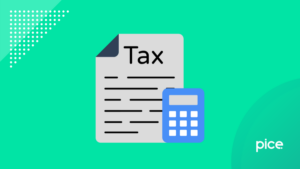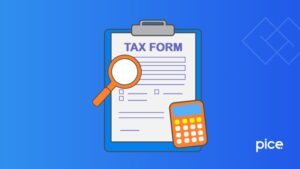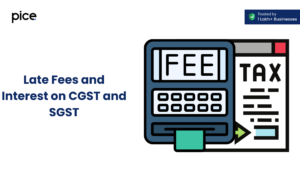Introduction to GSTR 4A Return: Simplifying GST Returns
- 20 Mar 25
- 9 mins

Introduction to GSTR 4A Return: Simplifying GST Returns
Key Takeaways
- GSTR-4A is a read-only, auto-generated form for composition taxpayers.
- It pulls data from GSTR-1, GSTR-5, and GSTR-7 for inward supplies.
- No edits are allowed, but it helps verify purchase details.
- Late filing costs ₹200/day, up to ₹5,000 max.
- Accurate GSTR-4 filing ensures smooth GST compliance.
GSTR-4A is a system-generated GST document that comes in a read-only format. It serves the purpose of a repository, providing detailed records of all inward supplies for composition dealers.
The GSTR-4A return takes information from different returns uploaded by suppliers covering GSTR-5 (meant for GST-registered foreign taxpayers), GSTR-1, and GSTR-7 (meant for tax deductors). A composition dealer can prepare their GSTR-4 personal records online by visiting the official GST portal. For details on GSTR-4A filing and other mandatory information on direct tax compliance, keep reading this blog.
What Is GSTR 4A?
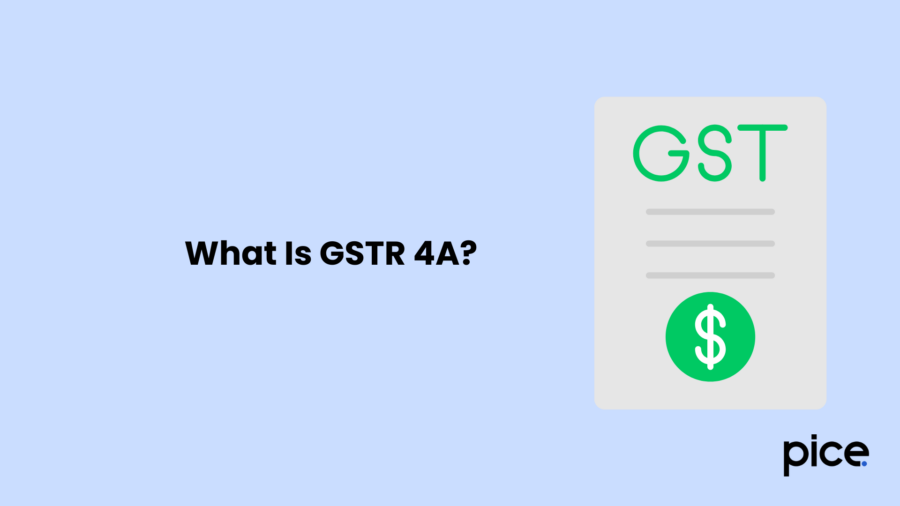
For composition taxpayers, GSTR-4A is an automatically drafted, view-only document. It facilitates the record-keeping of every purchase-related transaction carried out by the taxpayer, including inward supplies from GST-registered suppliers. The Goods and Services Tax Council generates this form depending on the data retrieved from GSTR-1, GSTR-5, and GSTR-7 returns.
Primarily, the GSTR-4A is designed to provide composition taxpayers with custom solutions for inward supply data. This, in turn, helps them to submit the yearly GSTR-4 filing. As the GSTR-4A return is auto-populated, no composition dealer can modify the particulars in it. Nonetheless, it serves as a key medium to cross-check the authenticity of purchase details as given by the suppliers.
GSTR-4A gets filled out as soon as the suppliers upload their respective returns. It enables GST composition scheme dealers to track their transactions all year round. This entire system establishes transparency and ensures straightforward business compliance with the GST norms.
What is the Eligibility for Filing the GSTR 4A?
Those who come under the GST's composition scheme can view the auto-generated GSTR-4A. Here's a brief breakdown of who is eligible for the composition scheme:
- The aggregate turnover of a business must be less than ₹1.5 crore to be eligible for the composition plan. For businesspersons staying in Himachal Pradesh or any other northeast Indian state, the upper threshold has been set as ₹75 lakh. For every entity, it is mandatory for all businesses to be registered with the same PAN to qualify for the composition scheme.
- To compute the aggregate turnover, the list of businesses should be under the same PAN. Otherwise, the composition scheme cannot be enabled.
- The notice boards at all business addresses must specify ‘composition taxable person’. Also, this phrase should be visible in every bill of supply that the business issues.
- For all suppliers of goods, the upper limit of supplies is capped at ₹5 lakh.
- On availing the composition scheme no dealer will be permitted to claim any input tax credit or composition tax.
- Finally, businesses that are involved with the intra-state supply of goods are also capable of registering themselves under the composition scheme.
How to File GSTR 4A?
As discussed earlier, all the eligible candidates can only view the GSTR-4A return form. It is automatically generated by drawing the data from GSTR-1 and GSTR-5 and thus no changes can be directly reflected on this read-only document.
Let us have a quick look to understand how to view the particulars in form GSTR-4A:
Step 1: As the preliminary step, open the GST portal and enter into your GSTIN account by entering the correct credentials.
Step 2: Navigate to ‘Services’ and select the option ‘Return’ to access the ‘Dashboard’.
Step 3: Next, in the ‘File Returns’ section, proceed to pick the ‘Return Filing Period’ followed by the ‘Financial Year’ to view the detailed sections.
Step 4: As the year details are mentioned, now you should click on ‘Search’ to view further details.
Step 5: Select ‘View’ on the GSTR-4A tile visible on your device screen.
Step 6: When the total number of invoices exceeds 500 then one has to click on the download button.
Step 7: Click on the ‘Generate File’ option to download the file.
Step 8: Review all the details as displayed on the screen. Here, Sections 3A and 3B enlist B2B invoices, while Section 4 shows amendments made to B2B invoices, modifications in debit/credit notes, etc.
Details That GSTR 4A Furnishes
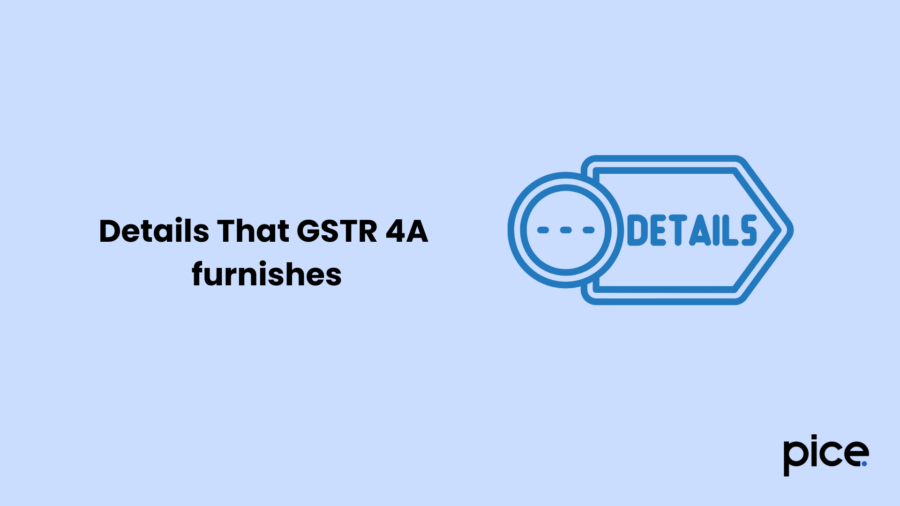
GSTR-4A is composed of multiple sections where you can find certain details. Let's discuss the contents of the GSTR-4A return briefly here:
- 3A, 3B (Invoices for B2B transactions): It will summarise the inward supplies provided by a GST-registered supplier.
- 4 (Credit/ Debit Notes): Here, one can refer to the credit/debit notes added by the supplier to their corresponding returns.
- 4 (Changes made to B2B invoices): It shows all the bills modified by a supplier in their return.
- 4 (Amendments to Debit/Credit Notes): Although GSTR-4A cannot be amended, suppliers can individually amend their credit notes or debit notes. These deviations are reflected in this part.
Details or Documents Mandatory for Filing GSTR 4A
The GSTR-4A return does not need any specific document as it is merely a read-only form and needs proper login information. Nonetheless, as the issuance of GSTR-4A relies on the data entered in GSTR-1, 7 and 5, one should arrange the following documents to access GSTR-4A:
Documents Needed to Access Form GSTR-1
- For registered person: purchase invoice details of supplies
- For consumers or unregistered persons: invoice details of inter-state transactions that are more than ₹2.5 Lakh
- Details of debit notes or credit notes issued by a supplier against bills received
- Particulars on export of taxable supplies (both goods and services)
- To consumers or an unregistered person: a breakdown of state-wise information on supplies
- Details of advances received by the supplier to facilitate future supply
- Any changes brought to the details on behalf of the supplier and consumer
- Brief description of outward supplies as per the records of HSN or SAC
- Nil-GST, non-GST and exempt supplies
Documents Needed to Access Form GSTR-5
To file a GSTR-5 return, the following documents are needed:
- Details on all commodities that a taxpayer has imported from outside accompanied by HSN code
- Description of original bill of entry
- Information of all outward supplies, including sales that have occurred in India
- Provisions of services that were imported
- Available information of buyers who are registered along with their GSTINs
- Every credit note and debit note detail issued by an entity for business-related relevant transactions
- Relevant details about one’s closing stock
- Tax information of one’s closing stock
- Refund-related data accepted by someone via the electronic cash ledger
Documents Need to Access Form GSTR-7
Documents mandatory for GSTR-7 include:
- GSTIN of the concerned taxpayer
- TDS information in addition to the aggregate due amount and the money one has already paid to the government
- Valid TDS corrections for earlier tax periods
- Interest or late filing fees applicable on TDS along with the outstanding tax liability met to date
- Refund details claimable by a person from electronic cash ledger
How to Revise GSTR-4?
At present, there is no provision to revise Form GSTR-4 (annual GST returns) once it has been filed. As soon as you file the return, the GST portal generates an Application Reference Number (ARN). Also, you receive an acknowledgement about successful filing through an SMS and email. Accordingly, your Electronic Liability Register Part-I and electronic cash ledger are updated.
GSTR-4 Late Fees and Penalty
If someone missed the time of filing of GSTR-4 return, they have to bear a late fee of ₹200 per day. Like this, as per the penalty sections, the maximum fine can go up to ₹5,000.
Additionally, if someone skips the payment of tax for a single quarter, then they won’t be allowed to file returns in the next quarter as well. Thus, it is necessary to execute the online entry of your GSTR-4 form within the given period for each relevant period.
Conclusion
The GSTR-4A return is an auto-drafted and view-only form designed for composition taxpayers registered under the GST scheme. All the accurate records that one can view on this form are retrieved from the already filed GSTR-1, GSTR-5 and GSTR-7.
To maintain streamlined updates across all these forms and avoid complex discrepancies, you can rely on professionals who will ensure accuracy across all the critical steps in the filing process. This is an important step guide to mitigate the country's compliance issues.
💡If you want to streamline your payment and make GST payments via credit or debit card, UPI consider using the PICE App. Explore the PICE App today and take your business to new heights.
 By
By 





